En el siguiente enlace podéis ver nuestros próximos viajes nacionales y al extranjero. Espero que os gusten.
Próximos viajes. Next trips.
Hola una vez más.
Hello
again.
En esta ocasión os muestro lo que vimos en tres viajes a la Sierra de Gredos entre mediados de mayo y principios de junio.
On this occasion I show you what we saw
on three trips to the Sierra de Gredos between mid-May and early June.
En los tres vimos todas las especies deseadas a excepción del los alcaudones dorsirrojos (Lanius collurio) que los vimos solamente en él último pues en los anteriores no habían llegado.
In all three we saw all the desired
species except for the red-backed shrikes (Lanius collurio) that we only saw in
the latter because in the previous ones they had not arrived.
En el primer viaje el tiempo estuvo nublado y con algo de lluvia pero en los dos siguientes el tiempo fue estupendo.
On the first trip the weather was cloudy
and with some rain but in the next two the weather was great.
En el camino hacia Gredos hicimos un alto para ver Águilas imperiales ibéricas (Aquila adalberti).
On the way to Gredos we stopped to watch Spanish Imperial Eagles.
Curruca zarcera (Sylvia communis).
Common Whitethroat.
En este grupo de buitres leonados (Gyps fulvus) había un buitre negro (Aegypius monachus).
In this group of Griffon Vultures there was a Black Vulture.
Buitre negro (Aegypius monachus).
Black Vulture.
Bisbita campestre (Anthus campestris).
Tawny Pipit.
Estornino negro (Sturnus unicolor).
Spotless Starling.
Y una sorpresa inesperada fue este quebrantahuesos (Gypaetus barbatus) que iba con con el hueso de una pata de cabra montesa entre sus garras. He consultado con un amigo y me ha dicho que podría tratarse de Gualay. Este ejemplar nació en el 2015 y fue liberado por la Fundación Gypaetus. Durante el mes de mayo ha habido 4 individuos por la Sierra de Gredos.
And an unexpected surprise was this Lammergeier that went with the bone of a Spanish Ibex paw between its claws. I consulted with a friend and he said that it could be Gualay. This specimen was born in 2015 and was released by the Gypaetus Foundation. During the month of May there have been 4 individuals in the Sierra de Gredos.
Macho de lavandera boyera (Motacilla flava).
Male of Yellow Wagtail.
Hembra.
Female.
Macho de lavandera cascadeña (Motacilla cinerea).
Male of Grey Wagtail.
Aviones roqueros (Ptyonoprogne rupestris).
Crag Martins.
Pareja de alcaudones dorsirojos (Lanius collurio).
Pair of Red-backed Shrikes.
Los primeros que veía este año.
The first I saw this year.
Adulto de mirlo acuático europeo (Cinclus cinclus).
Adult of White-throated Dipper.
Joven.
Juvenile.
Chochín común (Troglodytes troglodytes).
Winter Wren.
Macho de colirrojo tizón (Phoenicurus ochruros).
Male of Black Redstart.
Bisbita alpino (Anthus spinoletta).
Water Pipit.
Collalaba grís (Oenanthe oenanthe) macho.
Male of Northern Wheatear.
Hembra.
Female.
Macho de roquero rojo (Monticola saxatilis).
Male of Rock Thrush.
Que bonitos son.
They are beautiful.
Algunos ya tenían crías.
Some already had offsprings.
Hembra.
Female.
Impresionante.
Awesome.
Acentor común (Prunella modularis).
Dunnock.
Lagarto verdinegro (Lacerta schreiberi).
Iberian Emerald Lizard.
Macho de lagartija serrana (Iberolacerta monticola).
Male of Iberian Rock Lizard.
Hembra.
Female.
Coco común (Cuculus canorus).
Common Cuckoo.
Gorrión chillón (Petronia petronia).
Rock Sparrow.
Orquidea silvestre.
Wild Orchid.
Escribano hortelano (Emberiza hortulana).
Ortolan Bunting.
Además de ser muy bonitos son unos magníficos cantores.
In addition to being very beautiful they sing beautifully.
Algunos ya tenían crías.
Some already had offspring.
Tarabilla europea (Saxicola rubicola).
Common Stonechat.
Macho de pardillo común (Carduelis cannabina).
Male of Linnet.
Hembra.
Female.
Alondra común (Alauda arvensis).
Sky Lark.
Ya habían nacido algunas cabras montesas (Capra pyrenaica victoriae).
Some Spanish Ibeses already been born.
Vimos machos de distintas edades.
We saw males of different ages.
Este era impresionante.
This was awesome.
También había varias especies de mariposas.
There were also several species of butterflies.
Pandora (Argynnis pandora).
Cardinal.
Desconozco el nombre de esta.
I do not know the name of this one.
Ortiguera (Aglais urticae).
Small Tortoiseshell.
Otro de los escribanos que abundan en Gredos es el montesino (Emberiza cia).
Another of the bunting that are aboundant in Gredos is the Rock Bunting.
Precioso.
Beautiful.
Macho de roquero solitario (Monticola solitarius).
Male of Blue Rock Thrush.
Milano negro (Milvus migrans).
Black Kite.
Águila calzada (Aquila pennata) fase clara.
Booted Eagle white phase.
Y esta otra de fase intermedia.
And this one of intermediate phase.
Zorzal charlo (Turdus viscivorus).
Mistle Thrush.
Y el que más me gusta de la Sierra de Gredos, el ruiseñor pechiazul (Luscinia svecica).
And the one that I like most of the Sierra de Gredos, the Bluethroat.
Tuvimos muchas suerte y los vimos en las tres excursiones que hicimos.
We were very lucky and we saw them on the three excursions we made.
En la última ya vimos algunos jóvenes siguiendo a sus padres pidiendo comida.
In the last one we saw some juveniles following their parents begging for food.
Joven.
Juvenile.
No me pueden gustar más.
I really like them.
Hasta pronto.
See you soon.


































































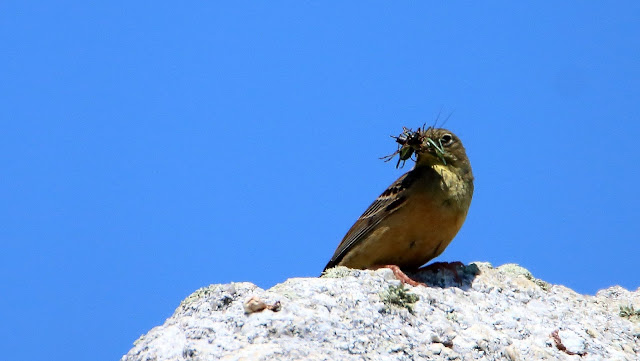



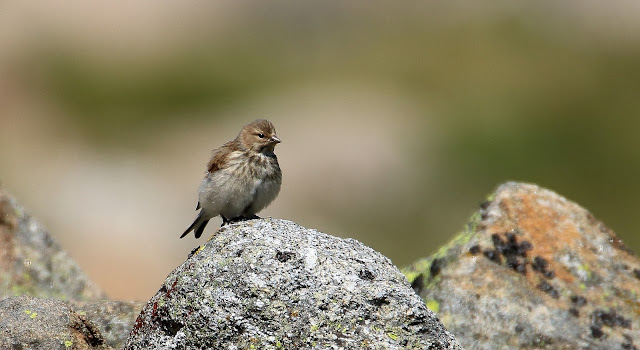








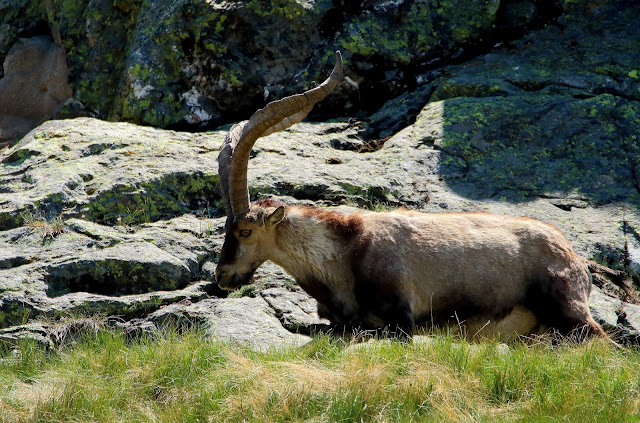












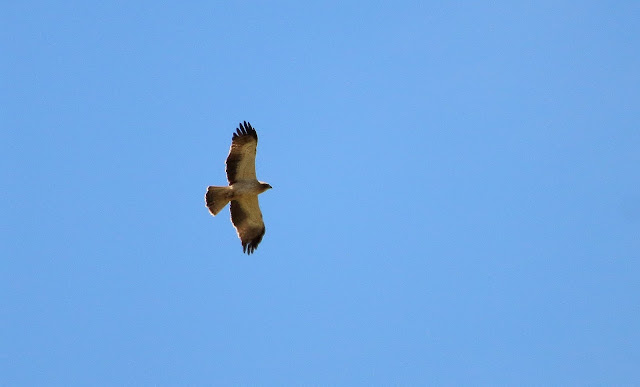

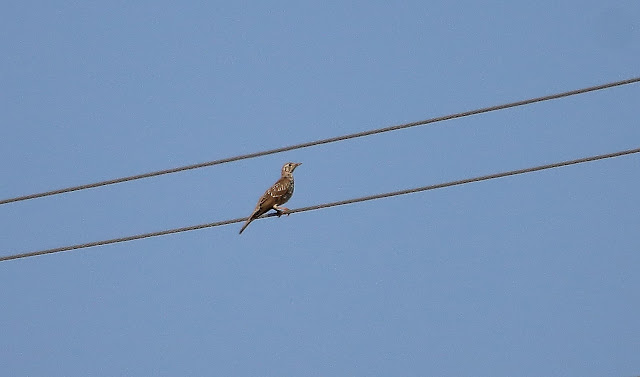











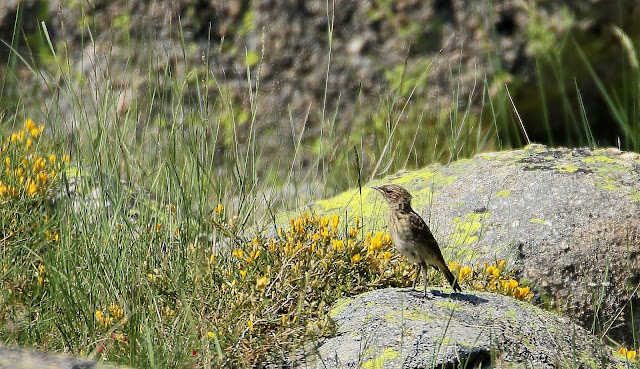



How did we miss most of those species on during our time in the Gredos mountains?
ResponderEliminarBrilliant photos Luis that show the benefit of travelling with you. Many thanks Luis
Many thanks to you for those encouraging words. It was a pity you miss them. Say hello to Elizabeth on my behalf.
EliminarAll the best for both of you,
Luis
Hace tiempo que no te envío ningún comentario. Como siempre, reportaje magnífico. Qué maravilla de aves, sobre todo los pechiazules, los roqueros y el quebrantahuesos.
ResponderEliminarComo curiosidad te diré que la segunda cita de esta majestuosa ave dada en los Pirineos Oscenses la di yo (hace 50 años) en el Centro pirenaico de biología experimental.
Disfruto con tus reportajes como un enano.
Un fuerte abrazo
Muchas gracias Pepe,
EliminarNo sabes como me alegro que lo pases tan bien con los reportajes de mis viajes.
Esperemos que estas majestuosas aves vuelvan a surcar y reproducirse en muchas zonas de nuestra geografía.
Un fuerte abrazo,
Luis